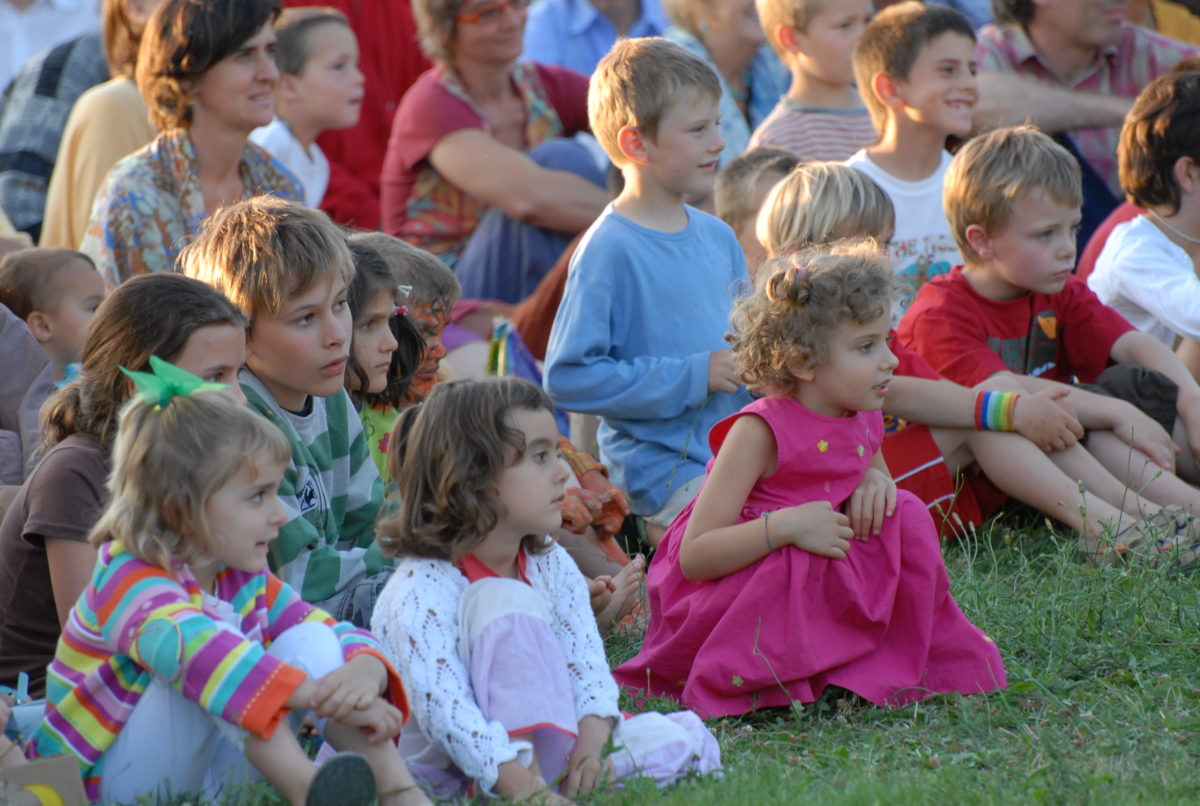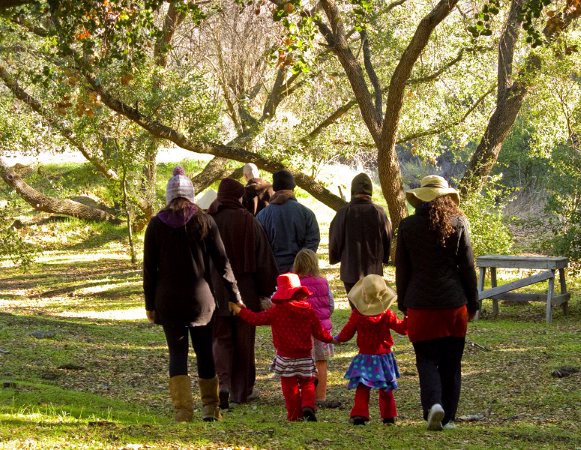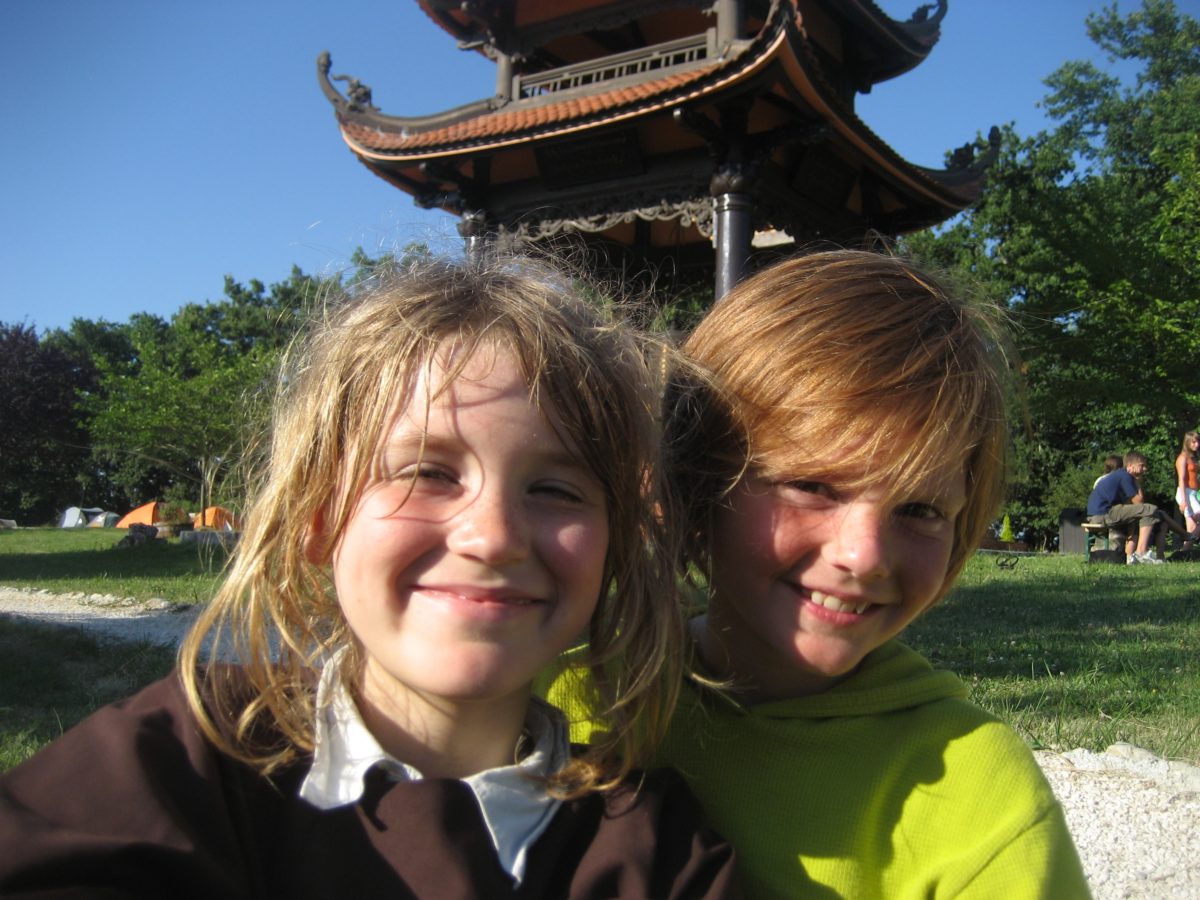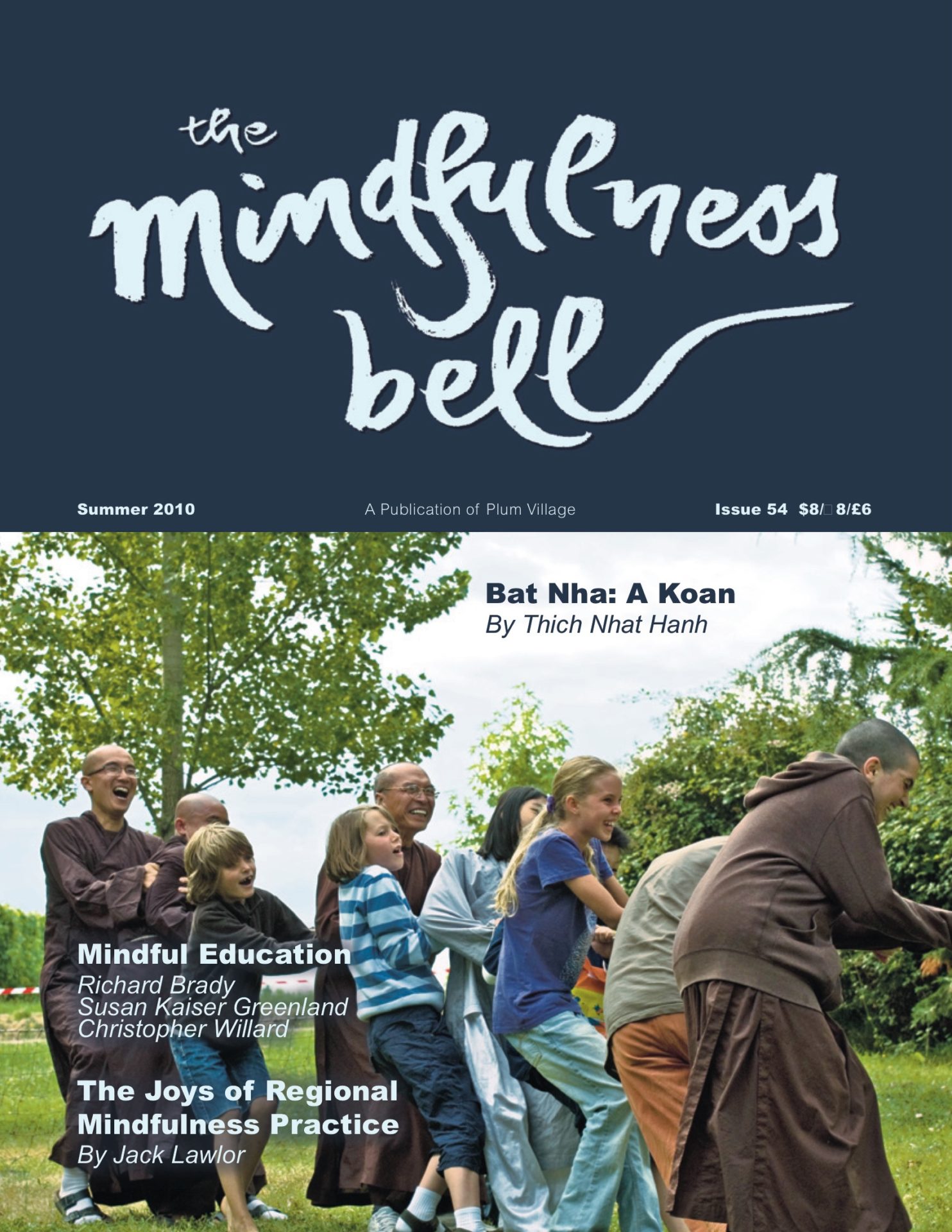By Mike Bell


I started learning to meditate in the late 1980s and went on my first retreat with Thay around 1992. I joined the Order of Interbeing in 1996. By 1999 I was looking for a new career and decided to take up teaching. I found I had less time to go to local Sangha meetings and so spent more time integrating the practice into my everyday life.
By Mike Bell


I started learning to meditate in the late 1980s and went on my first retreat with Thay around 1992. I joined the Order of Interbeing in 1996. By 1999 I was looking for a new career and decided to take up teaching. I found I had less time to go to local Sangha meetings and so spent more time integrating the practice into my everyday life.
Mindfulness Trainings: Guidelines for a Better Life
I first thought about trying to use Buddhist ideas in the classroom while teaching a General Studies class of sixth formers (sixteen-year-olds). We had been talking about ethics. I remembered hearing that if you ask a group of schoolchildren about the things that upset people at school, and then ask them to come up with rules to prevent these things from happening, they will naturally generate the Five Mindfulness Trainings. I decided to give it a try.
I asked the pupils to write down one or two things that had made them unhappy at school. They read their ideas out loud, and I wrote them on the board. The most common reason that people get upset in school is because of things others say, and particularly, being talked about behind their backs. I asked the pupils to group the ideas into categories and, finally, to come up with a rule that they might be prepared to follow to prevent these things from happening.
It soon became clear that this exercise was going to work, but not quite as I had anticipated. The pupils came up with a list of what they called “Rules for a Happy Society,” which included:
- Consideration for others—no discrimination on the basis of age, sex, religion, or disability.
- No stealing
- No hurting, violation, or murder.
- Protection for religions and cultures.
- Accept a reasonable level of risk—do not look for blame.
- Welcome asylum-seekers, but deport illegal immigrants.
- Make facilities available for people of all ages.
- Limit the use of addictive drugs.
I noticed the importance to young people of tolerance: religions, musical tastes, fashions, and sexuality were all mentioned in our class discussion as objects of tolerance.
I have tried the same exercise with twelve-year-olds. I introduce the practice as “the science of happiness,” and tell them not to believe what I tell them, just to examine the facts. On one occasion, without any prompting, they did indeed group their concerns into the same five areas as the precepts: violence, stealing, speech, sexual misconduct, and consumption. I found from experience that I needed to include a second question, such as: “What things that you eat, buy, or consume can make you or other people unhappy?” Once prompted, they easily came up with overeating, getting drunk, and using drugs.

Mindfulness Practice: Calming Your Mind
I have several times tried to adapt our mindfulness practice to the classroom. I introduce these ideas as ways to calm your mind, to stop from worrying, to think more clearly, or to help you focus. Initially I thought I would follow Thay’s idea of the “pebble meditation”: moving five pebbles from hand to hand as you breathe in and out. I then realised that if I sent thirty pupils out of the classroom to collect five pieces of gravel from the driveway, I would really not end up with a meditation lesson! So first I tried using five pencils. Unfortunately, not every child has five pencils, and pencils come with some disadvantages—they take a lot of tidying up, they lend themselves to tapping, and they fall on the floor—so I decided to invent a simpler system. This is the five-finger meditation.
You start with the index finger of one hand resting on the wrist of the other hand, just below the thumb. Breathing in, slide the finger up the thumb. Breathing out, slide the finger down the other side of the thumb. Breathing in, slide the finger up the first finger; breathing out, slide the finger down the other side of that finger, etc. With nothing to fall on the floor, this system has worked reasonably well.
Slow walking meditation around the outside of the classroom was less successful— too many pupils did silly things, giggled, and poked each other. However, walking meditation has really worked with children who are being bullied.
I point out that bullies are people who enjoy seeing somebody else upset, so the trick is to not give them any idea that you are upset. I have shown several pupils how to bring their attention down to the contact point between their feet and the ground and how to keep their focus there as they walk across the playground, not allowing any change in expression when somebody makes a taunting comment. I have observed a change in two or three pupils. One girl, who would stop behind to tell me how horrible people were, now stops and tells me something else!
After I taught these exercises to one or two classes, a group of rather unruly boys asked me if I would teach them meditation. I told them that I would only do it with classes that I knew and only if everybody agreed to participate. I never expected the boys to be able to be quiet enough to do it. But each lesson they kept asking, so I decided to give it a try. To my amazement, they did quite well, with one particular boy practising extremely well. I asked him whether he did any activities that were repetitive and that required focusing his mind. He told me that he was a cross-country runner and that when he was running, he often paid attention to the feeling in his legs. He had no trouble sitting still without fidgeting, clearly focused for much longer than the other pupils.
On the day of their exams, I was waiting with my pupils outside the examination hall when two of them asked if they could do the relaxation practice again. (I had told them it would help them with their exam.) A group of five or six started breathing meditation. One of their friends came over. “What you lot doin’?” he asked in a jeering voice. One of my pupils immediately replied, “Meditating. Sir taught us… and it’s gonna make us better in our exam, so you can shu’ up!”
Can We Live by Ourselves Alone?
This year I was planning to teach eleven-year-olds about the characteristics of living things. I asked the technician to bring me a green plant and a large stone. Showing these items to the pupils, I asked them what would happen if I put the stone in a cupboard and left it for a year and took it out again. They had no trouble telling me that the stone would be roughly as it was before—perhaps a little dusty or even mouldy, but basically the same. When I asked them what would happen to the plant if it were kept in a cupboard for a year, they readily agreed that the plant would be dead, all rotten or all brown. I then asked them what the plant needed that the stone didn’t, and they said that it needed light and water and stuff from the soil. They copied my diagram and labelled it with things the plant needed. I then asked them what the plant needed to be happy, and they were clear that it needed more sunlight, more water, and more nutrients. I asked them what the difference was between the stone and the plant, and they came up with the general idea that the plant “cannot live by itself alone.”
I then asked what would happen if the pupils were shut in a cupboard for a year (pointing out that I had no intention of doing this!). They easily agreed that they would be dead and rotten and smelly. I asked them what they needed to stay alive, and they first thought of food, water, and air; they soon added friends, family, and a house. They were ready to acknowledge that they could not live by themselves alone. I then asked them what they needed to be happy, and again they had no trouble listing the things that would help them. I asked them whether they thought the plant was separate from the water and the sunshine and the soil. This needed a little more thought, but they eventually agreed that the plant was not separate. I asked them if they were separate from their family and the air and the rain. They had no trouble with the idea that they were not separate. I asked what they needed to do to make sure that they were happy, and they decided that they needed to look after their family and the environment in order to be happy.
These experiences suggest to me that the wisdom found in Buddhism can be easily discovered by ordinary children without any reference to Buddhist terminology. The Five Mindfulness Trainings are not rules handed down by an authority but a set of guidelines for living that any group of reasonable people—even schoolchildren—can agree upon. I believe that my efforts to introduce mindfulness practice into the classroom have significantly affected and improved the lives of my pupils.

Mike Bell, True Sword of Understanding, lives near Cambridge, England and teaches science in a state secondary school. He is interested in exploring ways to offer the benefits of the practice to those who would be put off by labels, rituals and complex language.

